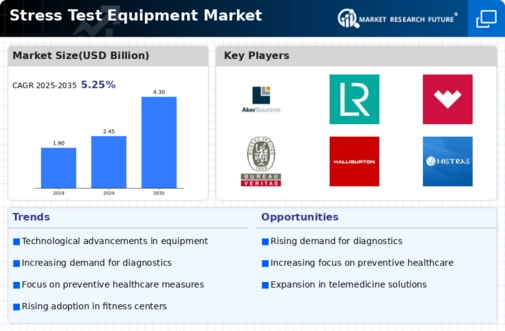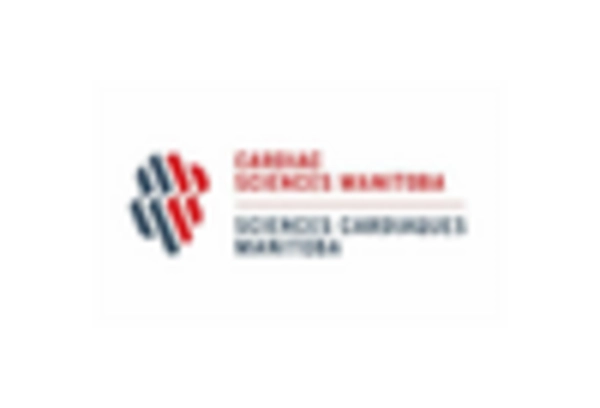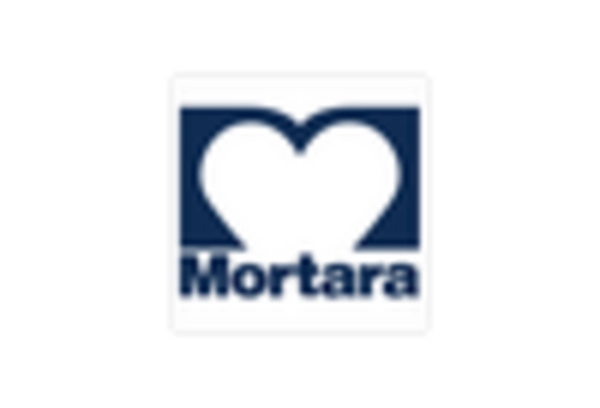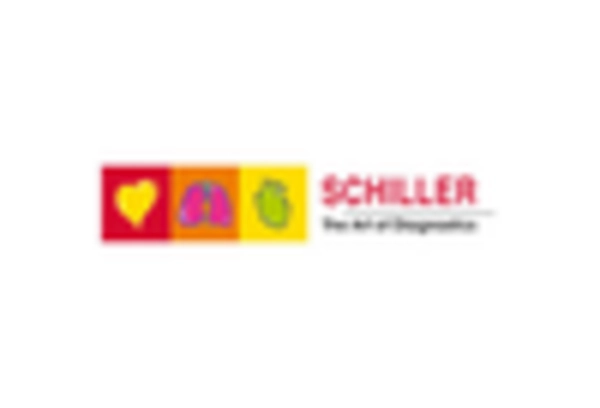The Stress Test Equipment Market is currently characterized by a dynamic competitive landscape, driven by technological advancements and an increasing emphasis on patient-centric healthcare solutions. Major players such as GE Healthcare (US), Philips Healthcare (NL), and Siemens Healthineers (DE) are at the forefront, leveraging innovation and strategic partnerships to enhance their market positions. GE Healthcare (US) focuses on integrating advanced imaging technologies with stress testing equipment, thereby improving diagnostic accuracy. Meanwhile, Philips Healthcare (NL) emphasizes digital transformation, aiming to create connected health solutions that streamline patient monitoring and data management. Siemens Healthineers (DE) is also investing in AI-driven analytics to optimize stress testing protocols, which collectively shapes a competitive environment that prioritizes technological integration and patient outcomes.
The business tactics employed by these companies reflect a concerted effort to localize manufacturing and optimize supply chains, which is crucial in a moderately fragmented market. This fragmentation allows for niche players to thrive, yet the influence of key players remains substantial. The collective strategies of these major companies not only enhance their operational efficiencies but also contribute to a more resilient market structure, capable of adapting to evolving healthcare demands.
In August 2025, GE Healthcare (US) announced a partnership with a leading telehealth provider to integrate remote stress testing capabilities into their existing platforms. This strategic move is significant as it aligns with the growing trend of telemedicine, allowing healthcare providers to conduct stress tests remotely, thereby increasing accessibility and convenience for patients. Such innovations are likely to enhance patient engagement and improve overall healthcare delivery.
In September 2025, Philips Healthcare (NL) launched a new line of portable stress test devices designed for use in outpatient settings. This initiative appears to be a response to the increasing demand for flexible healthcare solutions, particularly in non-hospital environments. By expanding their product offerings, Philips is positioning itself to capture a larger share of the outpatient market, which is expected to grow as healthcare systems continue to evolve.
In July 2025, Siemens Healthineers (DE) unveiled a new AI-powered analytics tool that enhances the interpretation of stress test results. This tool is designed to assist clinicians in making more informed decisions based on real-time data analysis. The introduction of such technology indicates a shift towards data-driven healthcare, where the integration of AI not only improves diagnostic accuracy but also streamlines clinical workflows, potentially leading to better patient outcomes.
As of October 2025, the competitive trends within the Stress Test Equipment Market are increasingly defined by digitalization, sustainability, and the integration of artificial intelligence. Strategic alliances among key players are shaping the landscape, fostering innovation and enhancing product offerings. Looking ahead, it is likely that competitive differentiation will evolve from traditional price-based competition to a focus on technological innovation, reliability in supply chains, and the ability to deliver comprehensive, patient-centered solutions.


















Leave a Comment